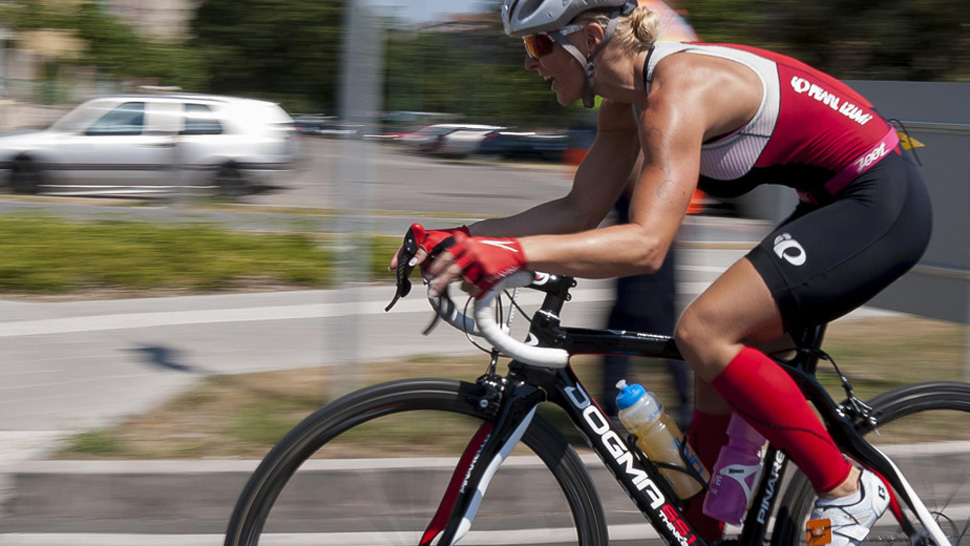
Maximizing the benefits of working out includes choosing the right foods to fuel up and recover quickly after all that effort! Get the balance right by choosing whole foods — lots of fruits and vegetables, along with some whole grains and lean proteins — and healthy hydration. Competitive athletes may have truly specialized requirements, but for the rest of us some simple guidelines will get us through our next jog or dance class with the right energy balance. (If you’re extremely active, you may want to consult with a registered dietitian about meeting your high-level nutrition needs.)
Timing is key when you’re eating for performance, and the most important rule is to fuel up with something. Don’t try to work out on an empty tank! If you’ve had a full meal within the past couple of hours, you probably just need a glass of water on your way out the door. If it’s been several hours since you last ate, a small snack of easily digested carbohydrates will help you crank up the intensity of your workout. Consider a small banana, handful of crackers, or a cup of yogurt, for example. Also, remember to hydrate before and during your workout, about 8 ounces of water for each 30 minutes will do the trick.
After you cool down, depending on the duration and intensity of your workout, you may want to eat again to provide your body with protein to repair muscles and with carbohydrates to refill energy stores. While it’s true that your muscles are most “ready” to take in fuel within the hour after your workout, this timeframe is most important for those athletes who are planning to exercise again in the next 12 hours. If your next sweat session isn’t planned for 24 to 48 hours, your muscles will recover with food throughout the day. That said, eating a small snack after a workout longer than 60-90 minutes can also help keep you from getting too hungry later in the day and accidently overeating. If you have a real meal waiting for you, that will cover your bases. If not, consider a protein and carbohydrate snack such as an apple with peanut butter, or a hardboiled egg and some fruit. Or rehydrate with chocolate milk – studies have shown that it’s an excellent recovery drink, with balanced carbohydrate, protein, and fluids. No need to spend big dollars on fancy shakes – whole foods work just as well!
In general, fueling well can help your athletic performance while also supporting weight management. However, the key is not to go overboard with your fueling plan, which could lead to accidental weight gain. Use this chart as a guide to eating for your best performance.
| Workout time | 4+ hours before workout or competition (including the night before) | 1-2 hours before workout or competition | During workout or competition | Post workout or competition |
| Endurance activities or high intensity training lasting more than 60-90 minutes | Complete meal: lean protein, carbohydrates, some healthy fat.
Water. Examples: Grilled chicken or fish, sweet potato, and salad with vinaigrette. Key points: Choose familiar foods and don’t overdo it. Avoid extremely high fat or fried foods and large portions of high-fiber foods. |
Small meal or snack: primarily carbohydrates with small amounts of fat and protein.
Water. Key points: test out snacks and meals during training to learn what works for you. |
Easy-to Digest carbohydrates & water or sports drinks.
Examples: raisins, homemade energy bars, dates, pretzels, fruit juice mixed with water (50:50 mix). Key points: easily digestible (simple) carbohydrates provide immediate fuel to your muscles. Either foods or beverages can achieve this. Avoid protein, fiber, and fat. |
Mix of carbohydrates & some protein within 1 hour of completion.
Examples: chocolate milk; smoothie with fruit, yogurt or milk (or protein powder); fruit and cheese, half of a turkey sandwich, or a full meal if stomach can take it. Key points: eat what you can within an hour of finishing to aid recovery, and then get back to your regular meal schedule. |
| Exercise lasting more than 60 minutes | Full meal.
Key points: stick to your normal meals and try to plan your workouts for at least 2-3 hours (or more) after a full meal. |
Small snack if you have not eaten in 3 or more hours. Primarily carbohydrates with small amounts of protein and fat.
Example: fruit, yogurt, trail mix. Key points: exercising on an empty stomach only leaves you with less energy to exercise — it does not burn more calories. |
Water.
Key points: during shorter sessions, you do not need additional fuel or electrolytes to energize your workout. |
Eat at your next planned meal or snack.
Key points: No specific recovery foods necessary. Eating regularly spaced meals throughout the day will aid recovery from your less intense workout. |
For ideas on eating during exercise, read more here.